This is a guest post by DismalPseudoscience, who visited Mikasa in March 2018.1
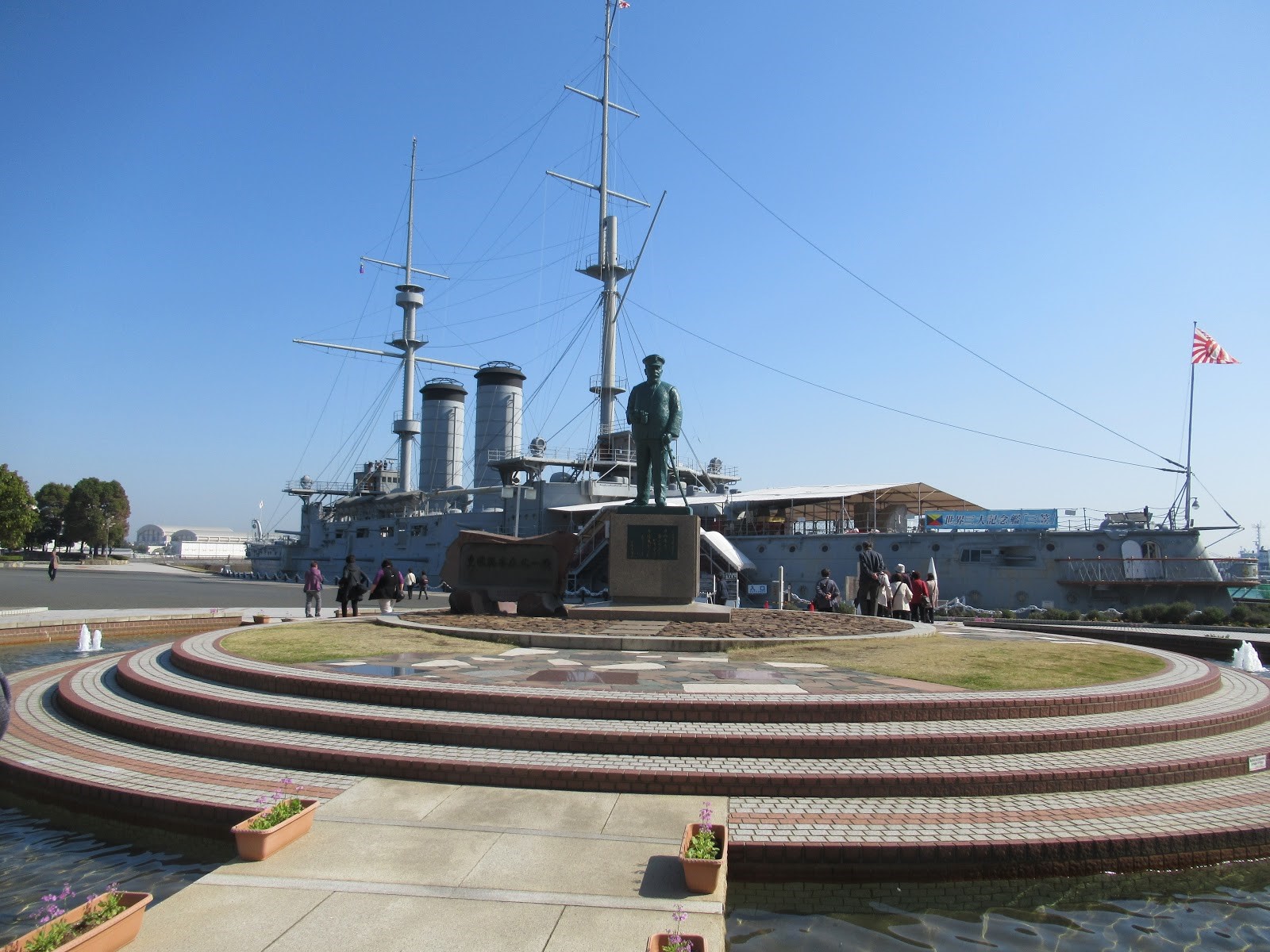
Mikasa in March 2018. Statue of Admiral Togo in the foreground.2
On May 27th, 1905, the Combined Fleet of the Imperial Japanese Navy utterly destroyed the Russian Second Pacific Squadron in the Battle of Tsushima, thus deciding the Russo-Japanese War. The commander of the Combined Fleet was Admiral Togo Heihachiro. At Tsushima, like at the earlier battles of Port Arthur and the Yellow Sea, his flagship was the battleship Mikasa.
Mikasa was laid down in 1899 by Vickers in Britain and commissioned into the Imperial Japanese Navy in 1902. Today, encased in concrete at Yokosuka in Tokyo Bay, also homeport of the US Seventh Fleet, she is the last surviving pre-dreadnought battleship anywhere in the world. With the Russian cruiser Aurora, also a museum ship in Saint Petersburg, she is one of only two remaining survivors of Tsushima. Yokosuka is about an hour and twenty minute train ride south of Tokyo station on the Keikyu line. Train signage and announcements are available in English.
The Mikasa was a slight upgrade of the prior Shikishima class ships, also built in Britain, and also patterned closely off the Royal Navy’s Majestic class of pre-dreadnoughts. Relative to the Shikishimas, Mikasa’s primary difference was the introduction of Krupp cemented armor. Mikasa carried a main battery of 2 twin 12” guns, a secondary battery of 14 single 6” guns, 20 single 3” guns, and assorted lighter pieces, along with 4 underwater torpedo tubes. She displaced about 15,000 tons, had a top speed of 18 knots, and carried a crew of over 800 men. She was also fitted with 4 Barr & Stroud coincidence rangefinders to control her guns.
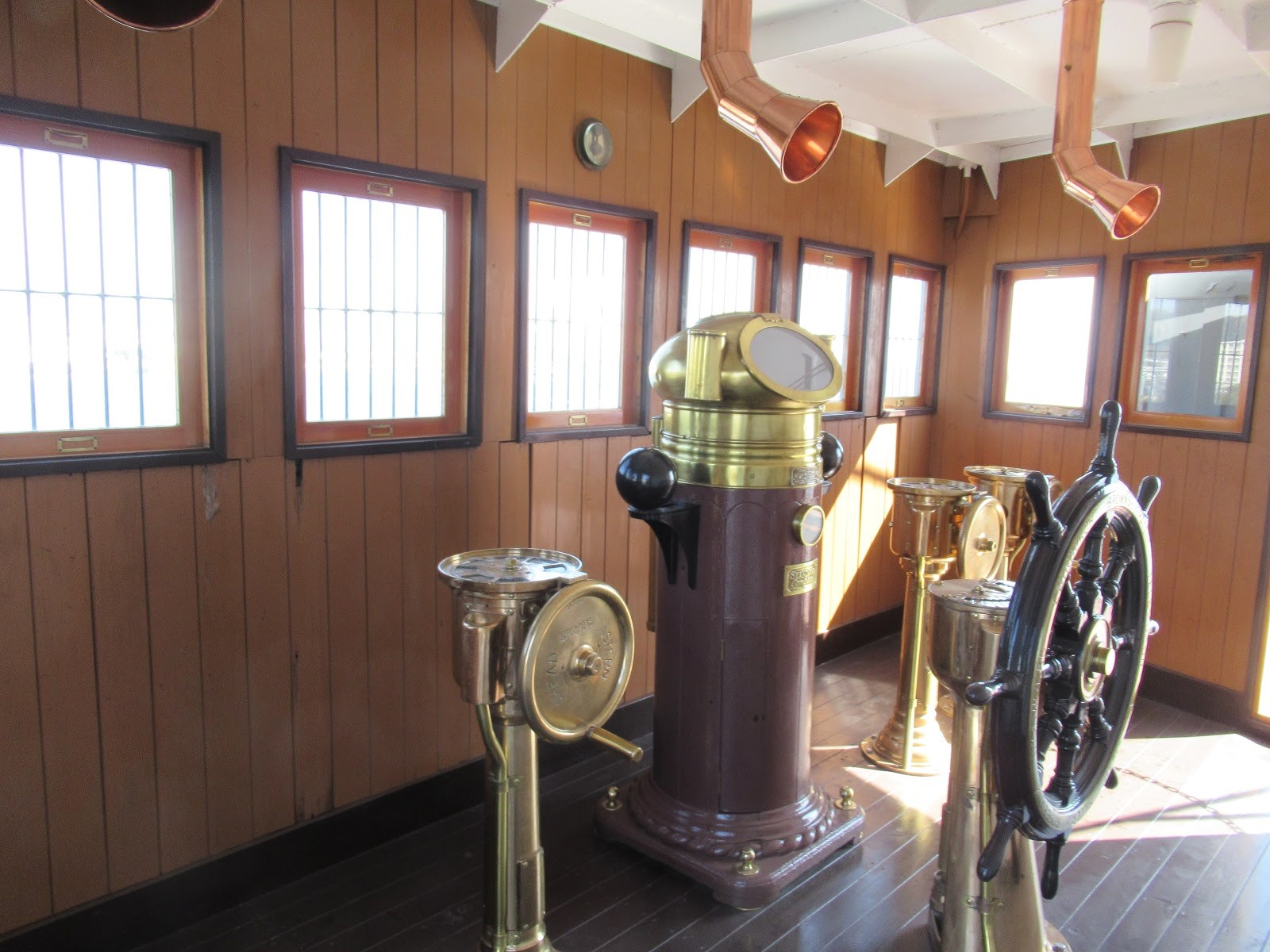
The bridge.
She was built as part of the 6-6 Plan, which called for Japan to purchase 6 modern battleships and 6 armored cruisers using the war indemnity paid by China after its defeat in the first Sino-Japanese War.3 Following that war, Japan had gained Taiwan outright and brought Korea into its sphere of influence. Critically, Japan also received the Liaodong Peninsula (part of China, immediately northwest of Korea) and its valuable harbor of Port Arthur. However, Russia, which had its own designs on Chinese territory, intervened with the backing of France and Germany. In this “Triple Intervention”, Japan was coerced into withdrawing from the Liaodong in exchange for a larger indemnity from China. Russia then shortly occupied the Liaodong and Port Arthur for itself. Japan was in no position to resist three European powers by itself, but by 1904, things had changed.
In 1902, Japan signed an alliance with Britain which guaranteed military support if either side found itself at war with more than one “power”. This neutralized the possibility of French or German support for Russia. Following the Boxer Rebellion in China, Russia had dispatched troops to Manchuria, but failed to withdraw them by the appointed deadline in 1903. Negotiations between Japan and Russia continued over spheres of influence in Korea and China, until in 1904 the Japanese government severed relations and declared war.
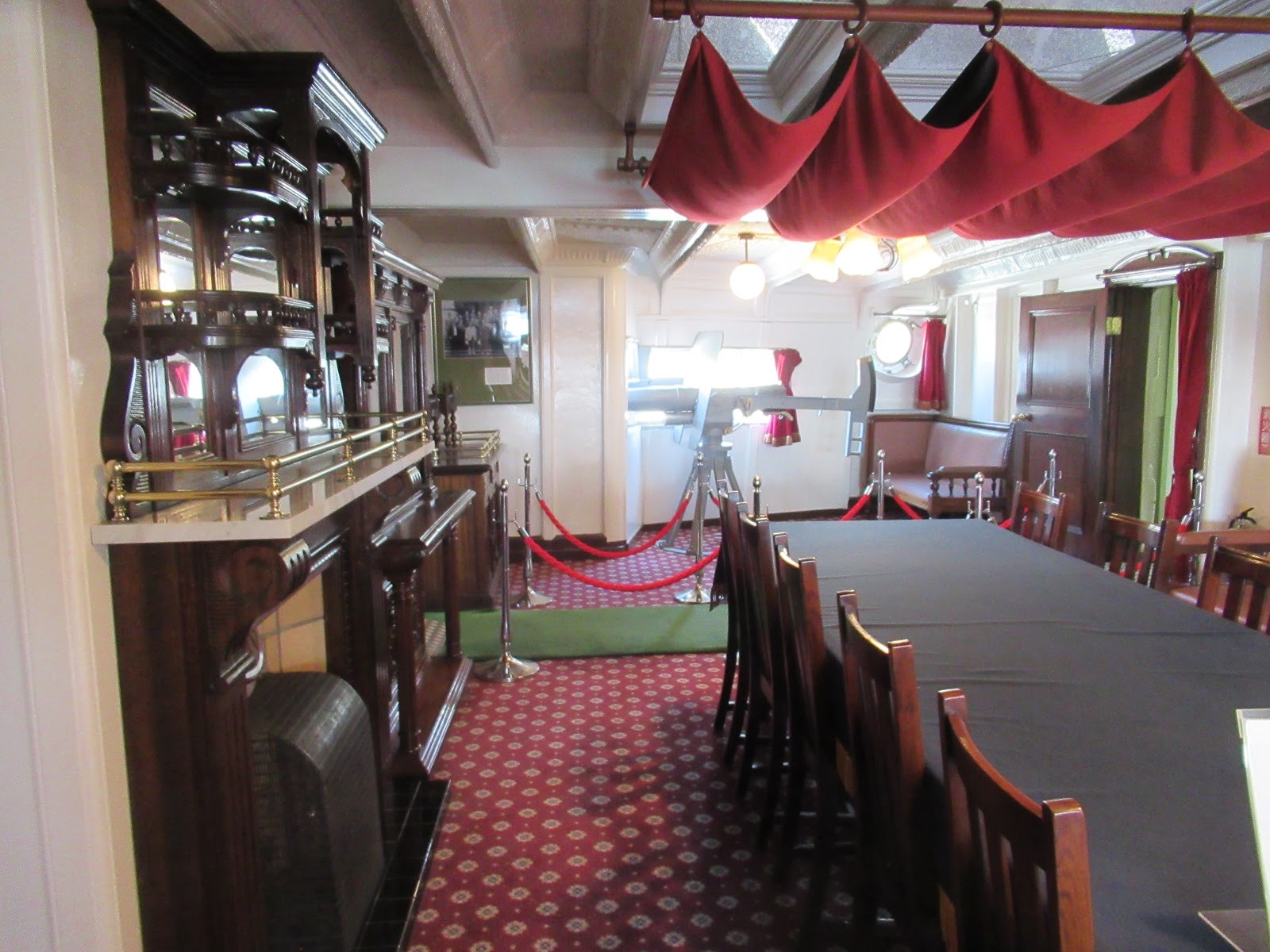
Admiral’s saloon on the Mikasa.
But three hours before their declaration of war on February 8th, 1904, the Imperial Japanese Navy launched a surprise night attack on the Russian fleet at Port Arthur with destroyers. The attack was only partially successful, and the Japanese and Russian fleets fought a series of indecisive battles around the port, where the Russians sheltered under the protection of their land batteries. But with the Russian fleet trapped, the Japanese were free to transport troops by sea, eventually besieging the port by land and destroying the last of the Russian fleet in harbor.
Mikasa’s hour of glory came with the decisive battle of Tsushima. As the noose closed around the Russian Pacific Squadron in Port Arthur, the Tsar ordered the Baltic fleet, renamed as the “Second Pacific Squadron”, to sail around the world to relieve them. Arriving after Port Arthur had already fallen, the Second Pacific Squadron attempted to pass through the Tsushima Strait between Japan and Korea to reach Vladivostok and continue the fight. But it was intercepted by the Japanese navy, thanks in part to the first naval use of radio, and destroyed in battle. Mikasa sailed at the head of the Japanese column, and received numerous hits but no serious damage.
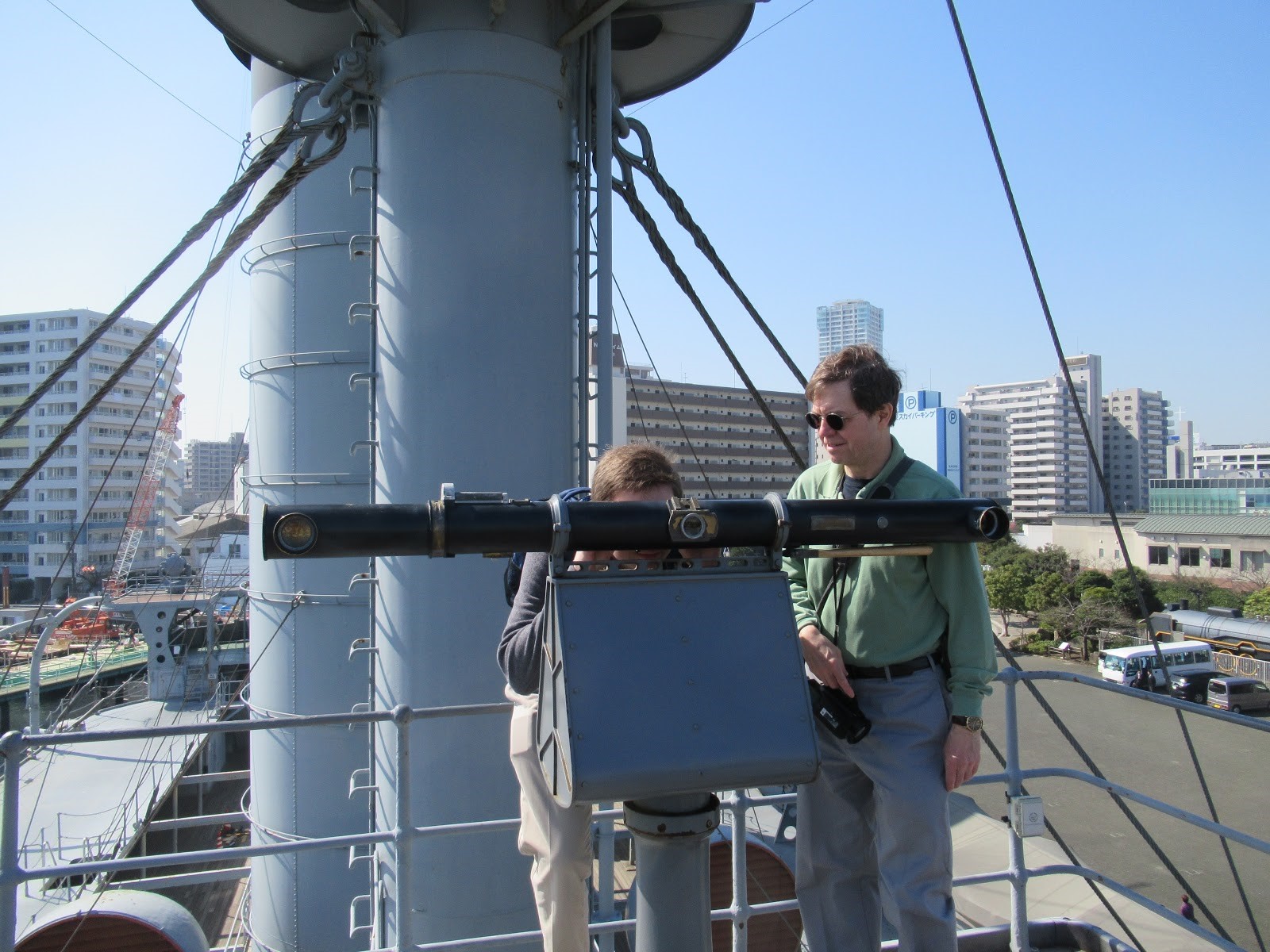
The Barr & Stroud rangefinger in operation.
Six days after the end of the war, though, the Mikasa suffered an accidental magazine explosion and blew up in harbor. Refloated and repaired, she served until the Washington Naval Treaty of 1923 mandated her disposal - thankfully as a museum rather than as scrap. She deteriorated after the Second World War until a restoration effort, supported by USN Admiral Nimitz, succeeded in raising money for her repair.
There is a small park by the ship with a statue of Admiral Togo, fountains, and a shell from the battleship Yamato. The ship is entered via a staircase - I don’t believe it is particularly handicap accessible.4 The bridge, upper decks, and main deck are all accessible to tourists. The bridge and upper deck are meant to represent the ship’s original condition, while the main deck has been fully converted into a museum exhibition space except for the admiral’s and captain’s cabins at the aft end. The upper deck is largely a free-roaming area for tourists, with relatively little signage. Tourists are permitted, one might even say encouraged, to train and elevate the 3” QF tertiary guns and can also try out operating a Barr & Stroud coincidence rangefinder. The main guns are not the ones she carried at Tsushima, but a post-war upgrade.
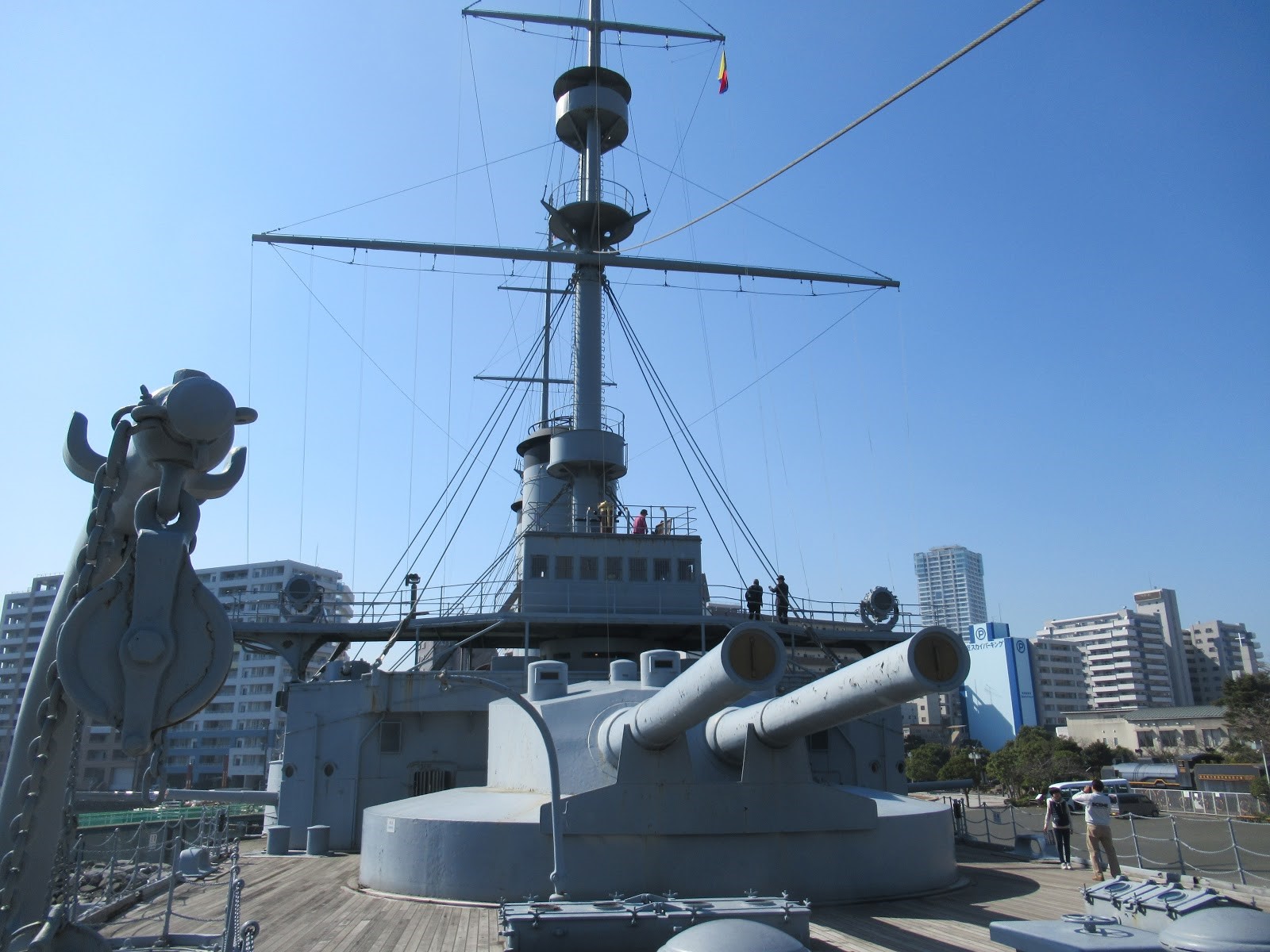
Mikasa’s main armament.
The main deck presents a number of exhibits highlighting different aspects of the ship’s design and history, focusing on a detailed exposition of the Battle of Tsushima. The museum’s hallway also contains an absolutely amazing collection of miniature ship models, which fill a double-decker case running for about 150ft. As best as I could tell, they have a miniature representing every individual ship present at Tsushima (including the Russian fleet), every IJN capital ship from WWII, and every class of post-war JMSDF ship. The main exhibition hall also contains a number of larger models of ships from Tsushima up to 6 or 7 feet in length. While not all signage is duplicated in English, most of the notable ones are.
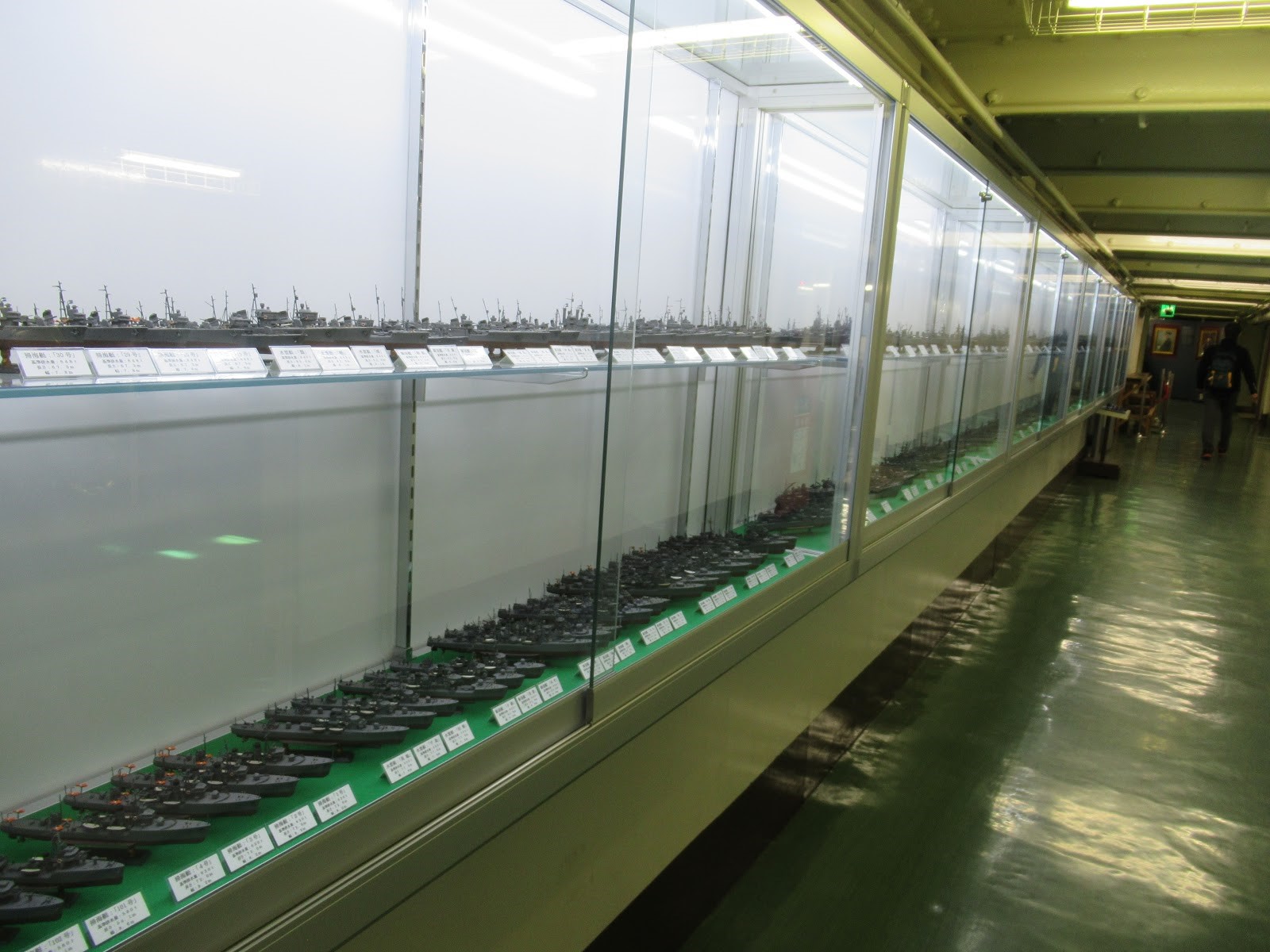
Mikasa’s ship model collection.
The exhibits are also notable for their perspective on history, which is best summed up in their own words, “The Japanese-Russo War was a defensive war in which Japan fought desperately to secure its national sovereignty and safety exposed to the menace of Imperial Russia… The Japanese-Russo War not only defended the security and independence of Japan, but also raised Japan’s international status and gave hope for independence to other Asian and Arabic nations under the oppression of colonization as well as the Eastern countries under the coercion of Russia.”
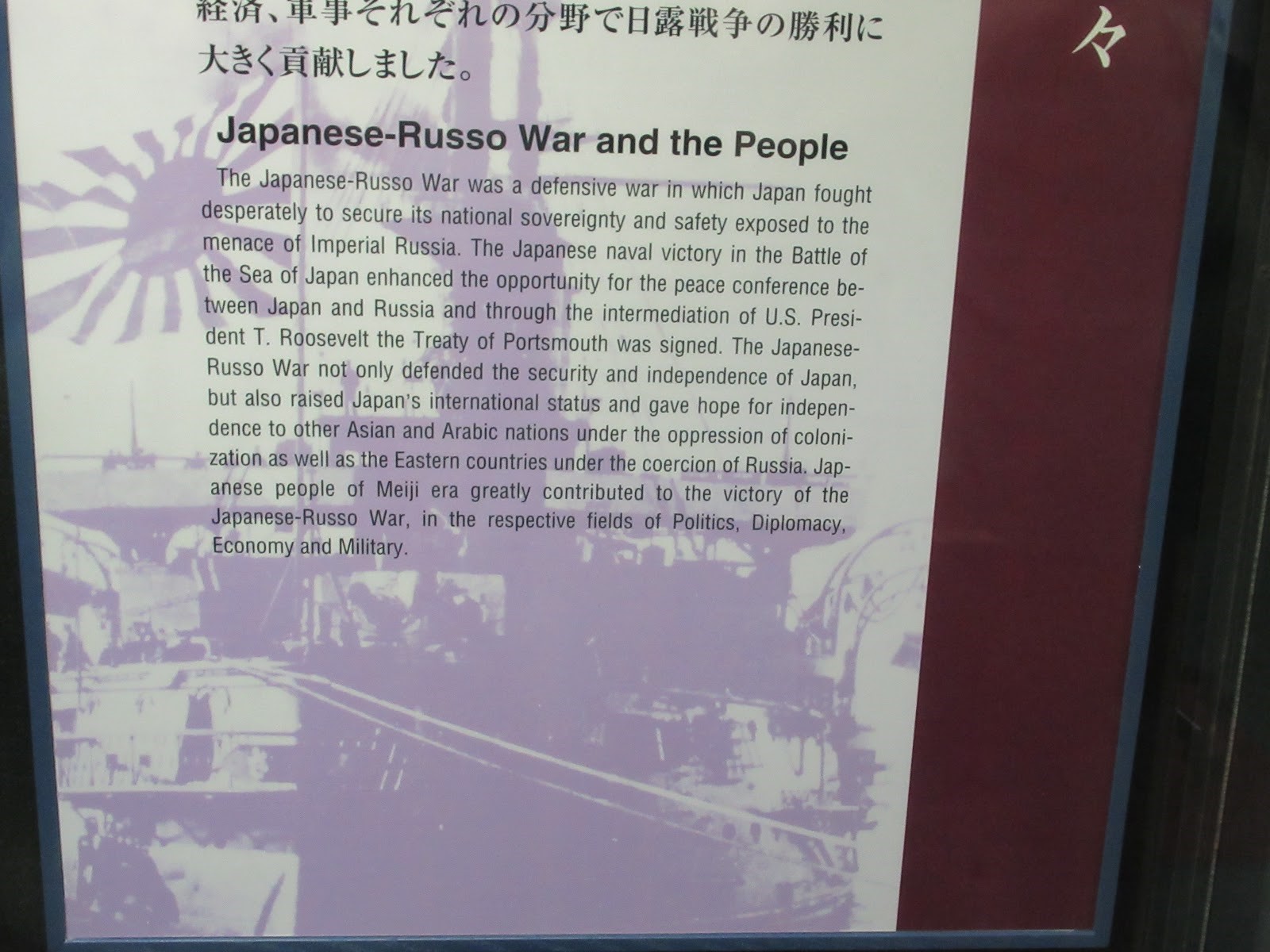
Signage in the main hall.
As was pointed out to me on SlateStarCodex shortly before my trip to Japan, the people who record and preserve their country’s history usually aren’t the ones ashamed of it. The exhibits at the Mikasa don’t speak about the Second World War. Why should they? The creators of the museum clearly want visitors - Japanese and foreign - to remember their country’s struggles and triumphs. I don’t think it’s wrong to remember and celebrate the accomplishments of Meiji Japan simply because the subsequent era turned out so badly. That doesn’t mean accepting what’s on the signs uncritically, but it does mean accepting that someone else believes it.5
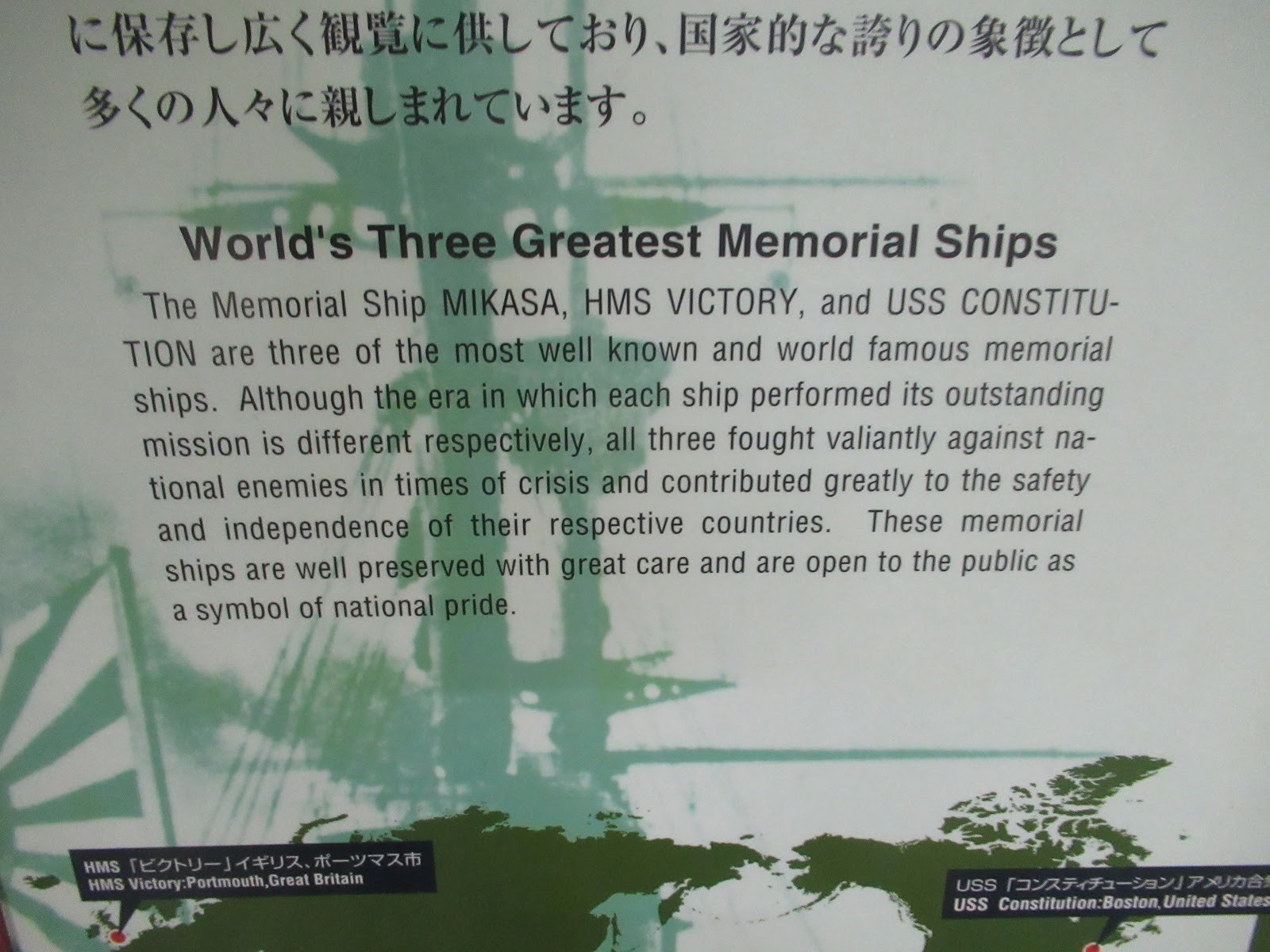
Sorry, Iowa!6
1 Bean: I really appreciate his willingness to contribute to Naval Gazing. It’s definitely made me more interested in visiting Japan. If anyone else is interested in providing a review of a military museum/museum ship I haven’t been to, email me at battleshipbean at gmail. ⇑
2 All pictures courtesy of DismalPseudoscience. ⇑
3 Bean: Naval Gazing has looked at this conflict before. ⇑
4 Bean: The only museum ship I’ve ever been on that was remotely accessible was the liner Queen Mary, but she’s been converted into a hotel, and was a liner in the first place. I used to start my safety spiel by reminding guests that Iowa wasn’t ADA accessible, so they should watch their step. ⇑
5 Lord Nelson has also visited Mikasa, and she and I have worked together to annotate and post some of her photos. ⇑
6 Bean: It seems significant that one ship in question is Japanese and the other two never operated against Japan. ⇑

Comments
That’s really cheap by the standards of most Western naval museums. I wonder who’s subsidizing it.
Constitution and Cassin Young were both free (just got back from seeing them). I suspect that the government is involved there, too.